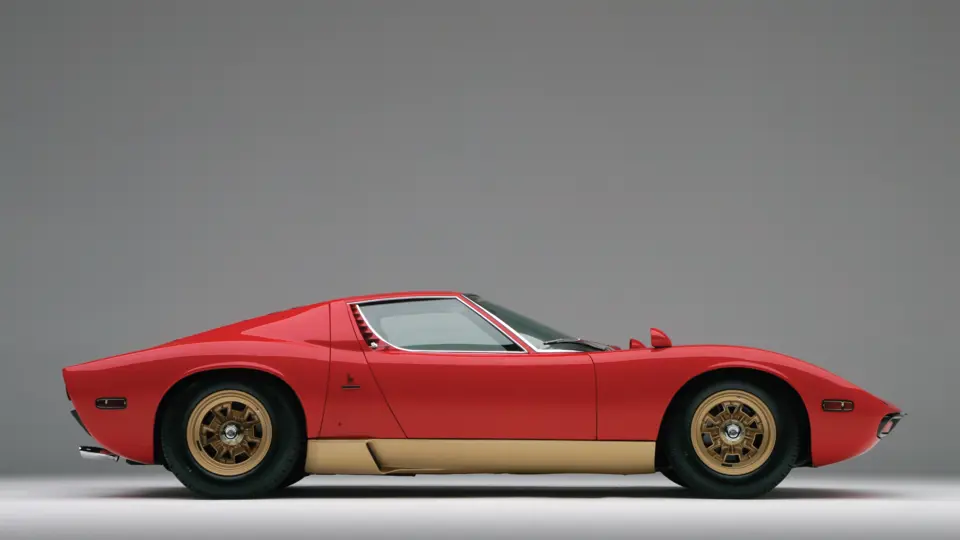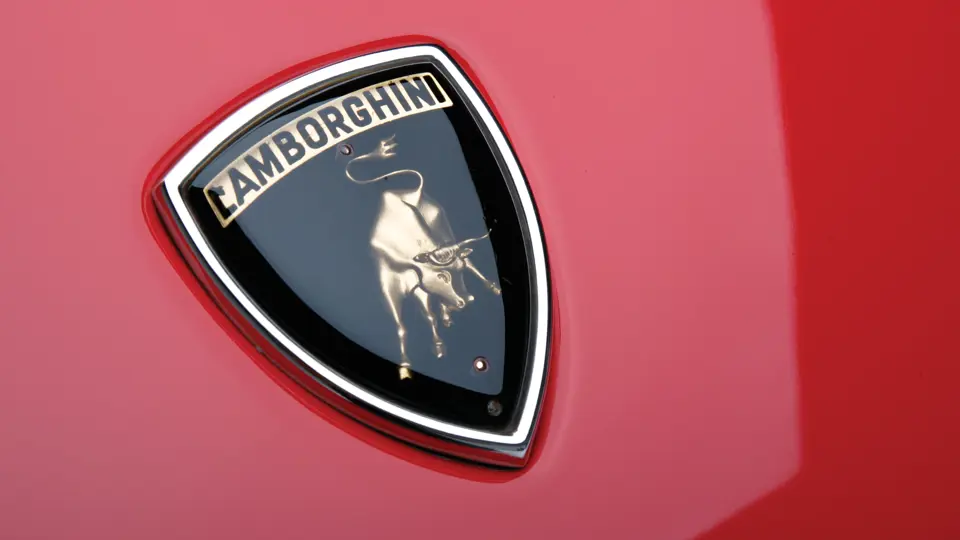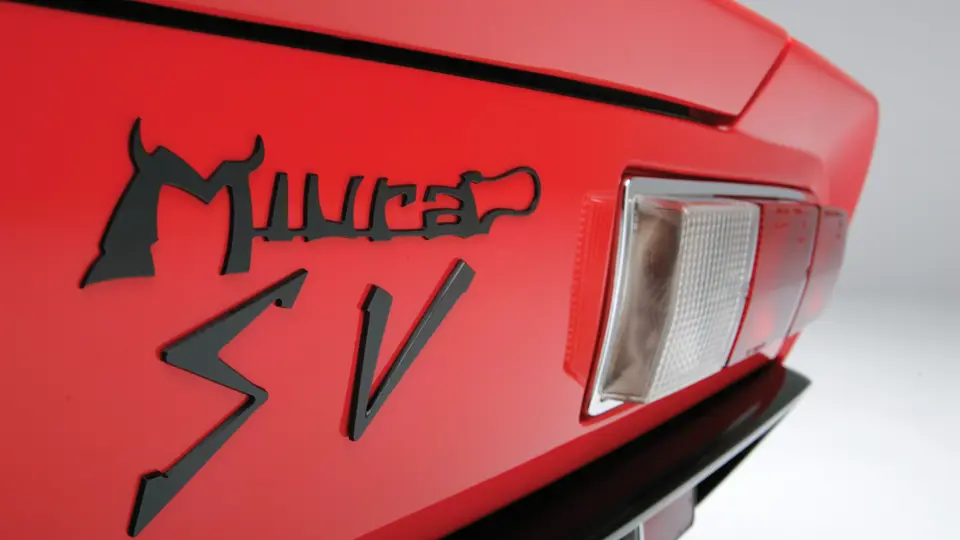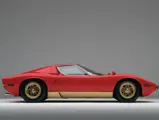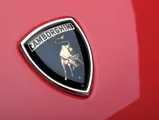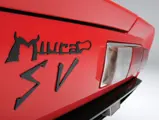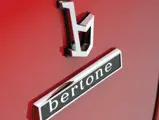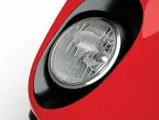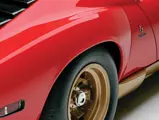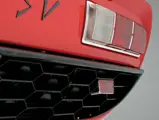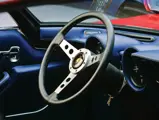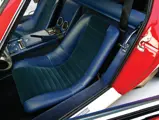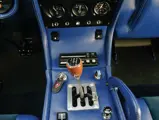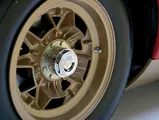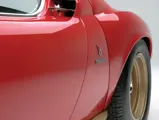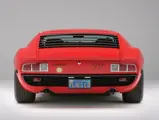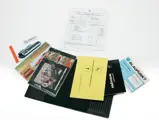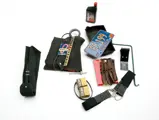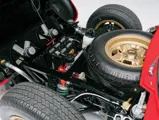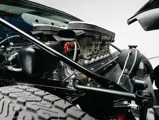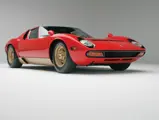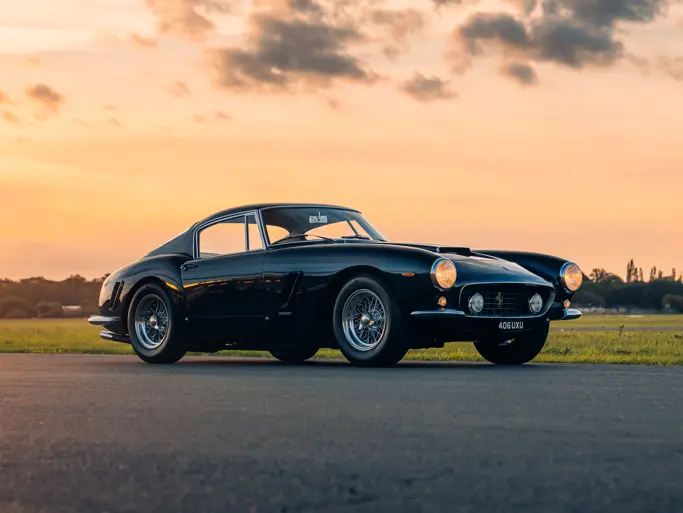
1971 Lamborghini Miura SV by Bertone
{{lr.item.text}}
$2,310,000 USD | Sold
{{bidding.lot.reserveStatusFormatted}}
- The factory publicity and U.S.-homologation prototype
- Featured on the factory brochure and at the 1971 Boston Auto Show
- The cover car of both Lamborghini Miura and The Lamborghini Miura Bible
- Formerly owned by Joe Sackey and beautifully restored by Miura guru Gary Bobileff
- Retains its original sperimentale engine; the finest example available for sale
385 bhp, 3,929 cc DOHC transverse mid-mounted alloy V-12 engine with four Weber twin-choke carburetors, five-speed manual transmission, independent front and rear suspension with A-arms, coil springs with tubular shocks, and anti-roll bars, and four-wheel hydraulic disc brakes. Wheelbase: 98.42 in.
The first “supercar” from Lamborghini, and perhaps the first supercar the world had ever seen, was the P400 Miura. When it was first unveiled at the 1966 Geneva Salon, its impact was nothing short of extraordinary. Simply stated, the Miura looked like no other on the road, and it marked a paradigm shift in the design of high-performance cars. Its sensuous lines were undoubtedly indebted to the placement of its engine, which was mounted transversely, just behind the passenger compartment. The Miura’s performance also matched its looks, and the car would go on to be the poster-child for a petrol-fueled generation. As such, Miuras could often be found in the garages of many of the most fashionable celebrities of the day, including Miles Davis, Rod Stewart, and Frank Sinatra.
Marcello Gandini penned the gorgeous design at the age of 27, and it encapsulated the youthful spirit of the age. The car was beautifully styled throughout and had intricate details that always brought a smile to the driver’s face when interacting with the car, such as the shape of the doors, which were supposedly modeled off of the horns of a raging bull. To many, it boasted the perfect automotive silhouette, as it was just as sensual as it was muscular.
The final iteration of the Miura, the SV, featured numerous improvements over the already spectacular P400S that came before it. The SV featured better handling, thanks to revised suspension, which helped to remove the “front-end lightness” that was so characteristic of the earlier cars; in turn, the rear bodywork was made slightly wider. Perhaps the most notable changes were to the engine, which featured larger carburetors and different cam-timing, as they made the SV much more user-friendly at lower rpms. With its engine producing 385 brake horsepower, the SV boasted incredible performance. A sprint to 60 mph from a standstill took just 5.8 seconds, and its top speed was quoted at 180 mph.
CHASSIS NUMBER 4884: THE FIRST AMERICAN SV
Lamborghini built just 21 examples of the Miura SV specifically for the United States market. These cars were delivered through their new official U.S. distributor, Alberto Pedretti’s Modena Racing Company of New York, and they were specially equipped with a reconfigured engine, which had an air pump and other minor differences that took a little horsepower from the mighty V-12 but were necessary to enable the model to be federalized by the EPA (by the skin of its Italian teeth!).
The car offered here, chassis number 4884, is the prototype that was built to be tested by the EPA, and it was the very first Miura SV sold in the United States. It is one of the first eight cars that were built with a single-sump oil system, and accordingly, it has a 200-mph speedometer, as well as the other features common to all American SVs, such as U.S.-specification headlight lenses and side-marker lights, octagonal center-bolt wheel nuts, a reinforced chassis and steel passenger compartment, and interiors with Borletti air conditioning, leather upholstery, and safety belts. Unique touches on this car include the Modena Racing Car emblem on the rear panel and a factory-installed additional ashtray in the driver’s door sill.
Joe Sackey’s quintessential The Lamborghini Miura Bible—a book which is important to the history of this particular car, as will be seen—notes chassis number 4884 as being a “factory publicity SV” with “engine number 30642 (sperimentale).” Indeed, this car was photographed for the Miura SV brochure and was intended for the New York Auto Show of 1971. However, delays in development resulted in it appearing instead at the Boston Auto Show that year, where it was finished, as it is today, in Rosso Corsa, with gold sills and matching wheels, and a Bleu leather interior with velour seat inserts. The appearance of this car at the Boston show marked the first appearance of a Miura SV in the United States.
Chassis number 4884 was then sold by Pedretti to Jack Robinson of Goddard, Kansas, which was described by Sackey as “a tiny hamlet west of Wichita with a population of less than 2,000 people…and the occasional tumbleweed…As the owner of the town’s only Miura SV, Robinson clearly owned the fastest car in Goddard, as the local highway patrol duly noted.” Robinson would regularly test the Miura SV’s performance on the ruler-flat Kansas terrain and reportedly drove it to Utah, where he occasionally observed speed runs on the Bonneville Salt Flats.
In 1977, the car was sold on Robinson’s behalf by Astro Motors, of Topeka, to Dr. Alan Brown, of Savannah, Georgia. According to Sackey, “[After being] told that the car was the first U.S.A. SV, Brown wrote a letter to Automobili Lamborghini SpA, who responded, confirming that his U.S.A. Homologation Prototype SV was indeed the very first one sent over to obtain type-certification for a limited series of U.S.A.-spec Miura SVs.”
Dr. Brown loved his Miura but was an “off-the-radar” enthusiast who was known only by a few other Miura owners; even still, his car remained completely original and perfectly preserved, down to its original Pirelli CN12 tires. Sackey eventually was able to locate him in Savannah, and the two men struck up a close friendship. However, with the good doctor’s untimely passing in 2005, his widow insisted that Sackey personally purchase chassis number 4884, which he did. Sackey proceeded to then send it to Gary Bobileff’s renowned Bobileff Motorcar Company, of San Diego, California, for a complete and thorough restoration.
The car was returned to its original combination, down to the sourcing of correct Bertone seat material, by the foremost U.S. Miura specialists, and it was finished exactly as it had been when the factory completed it. It went on to be shown at the 2006 Concorso Italiano, where it garnered much acclaim and a First in Class award. Most significantly, Sackey chose it as the cover car for The Lamborghini Miura Bible upon its publication in 2008, and he also devoted an entire chapter of the work to his pursuit, acquisition, and restoration of this significant SV. In 2007, the car was featured in the 25th anniversary issue of Classic and Sportscar magazine. It had appeared earlier on the cover of the famous Lamborghini Miura by Peter Coltrin and Jean-Francois Marchet, and it has been thoroughly described and documented in its entry in the online International Lamborghini Registry.
As this first American-delivery SV is still powered by its original sperimentale engine and is in every respect just as it was in 1971, it is not only historically significant but also one of the most unmolested, beautifully restored, and authentic of all examples. It is a car instantly recognizable to Lamborghini aficionados, one of whom will now have the pleasure of making it a deserving cornerstone of his or her collection.
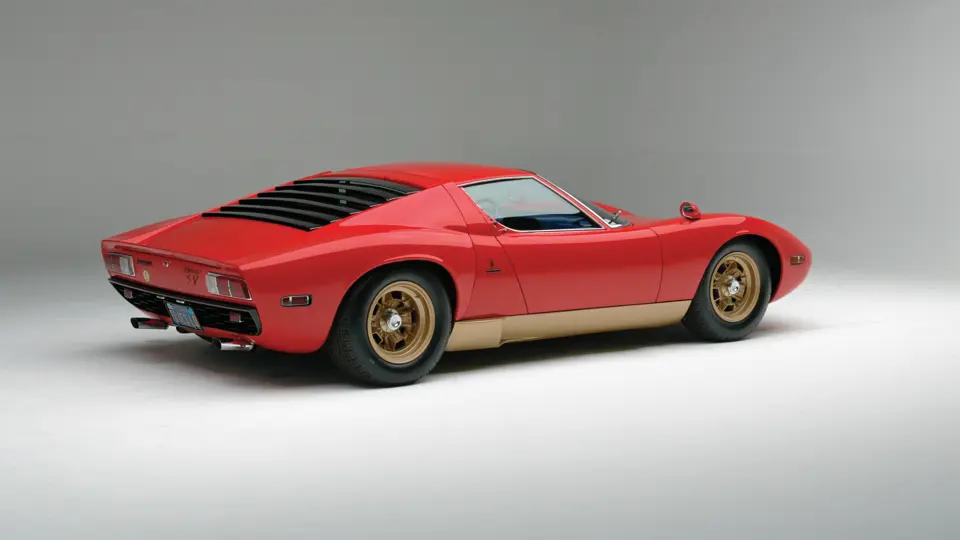



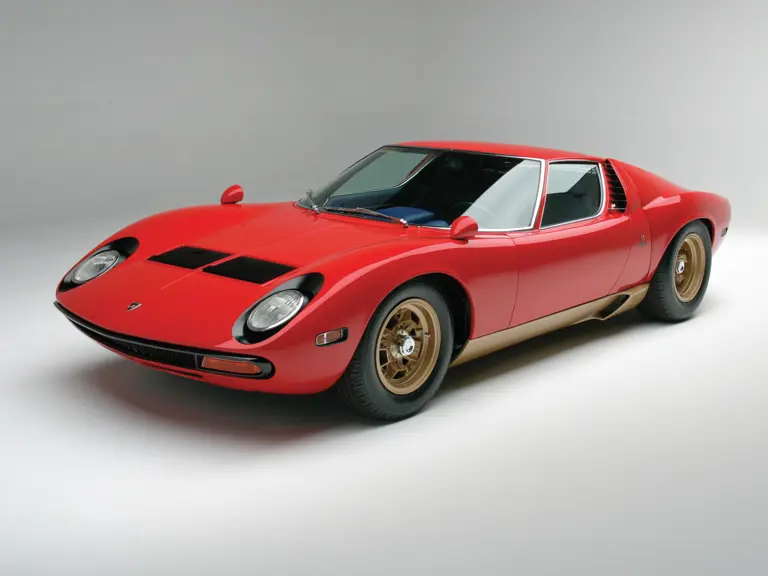
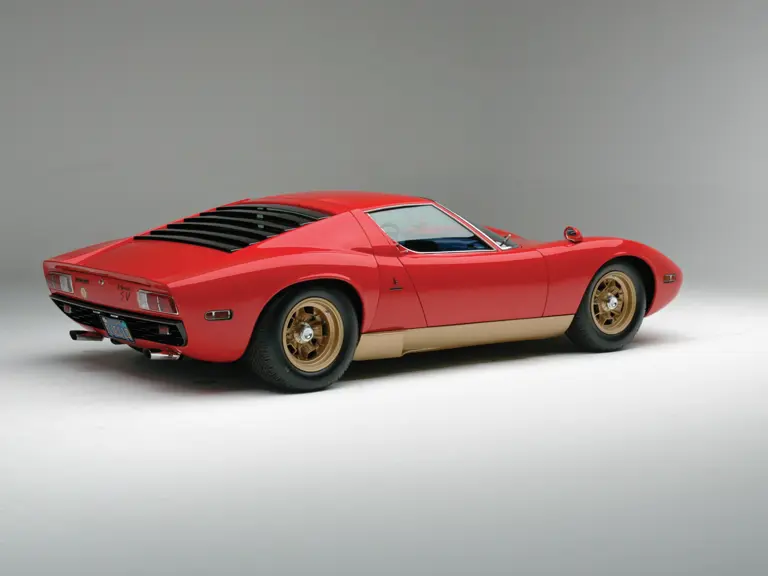
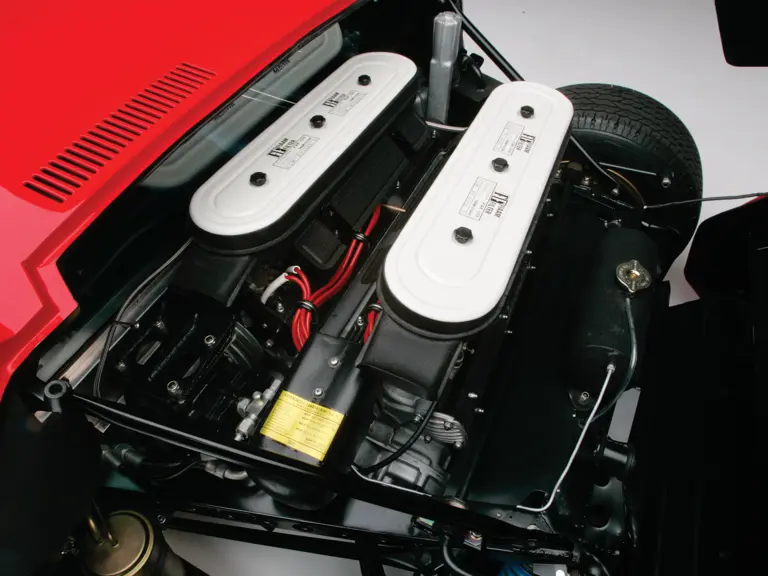
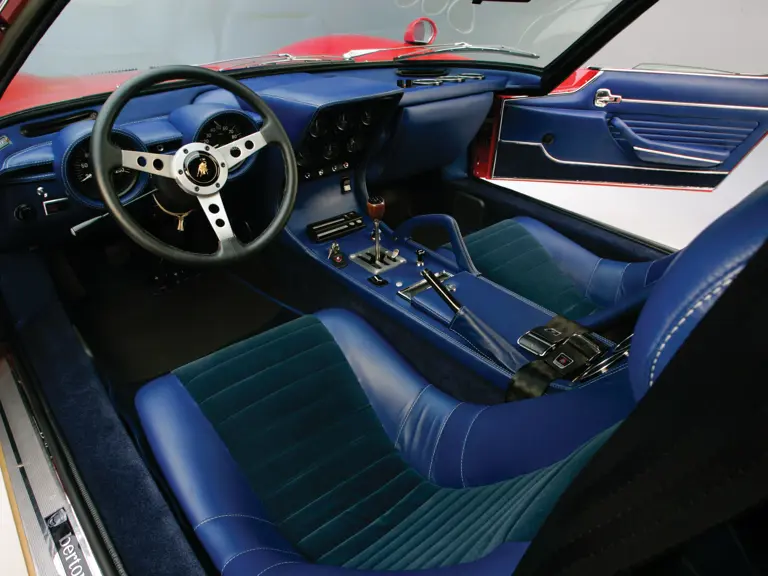
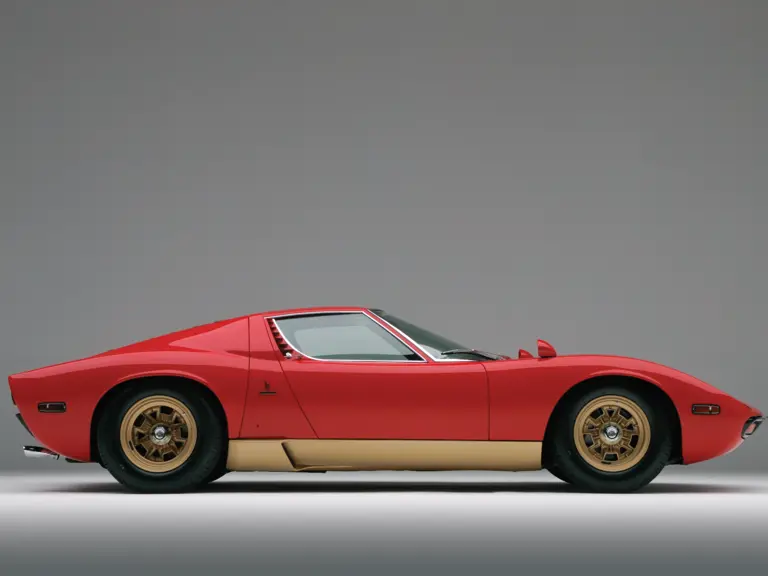
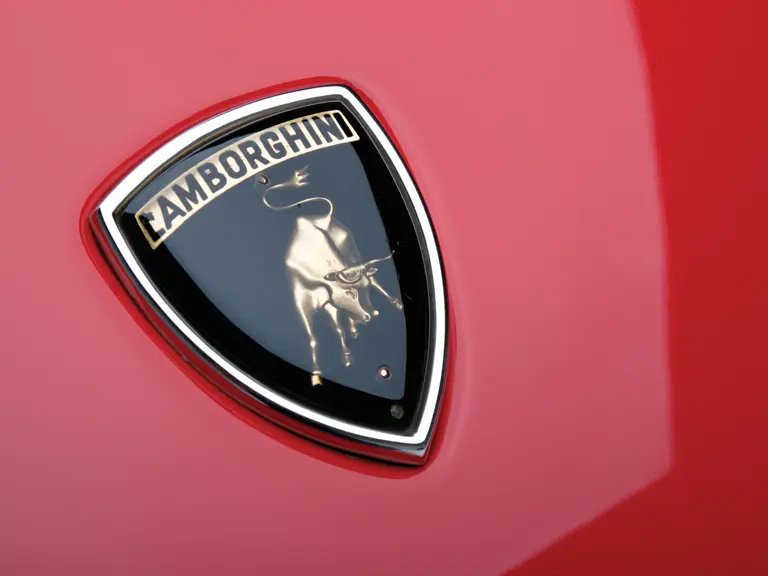
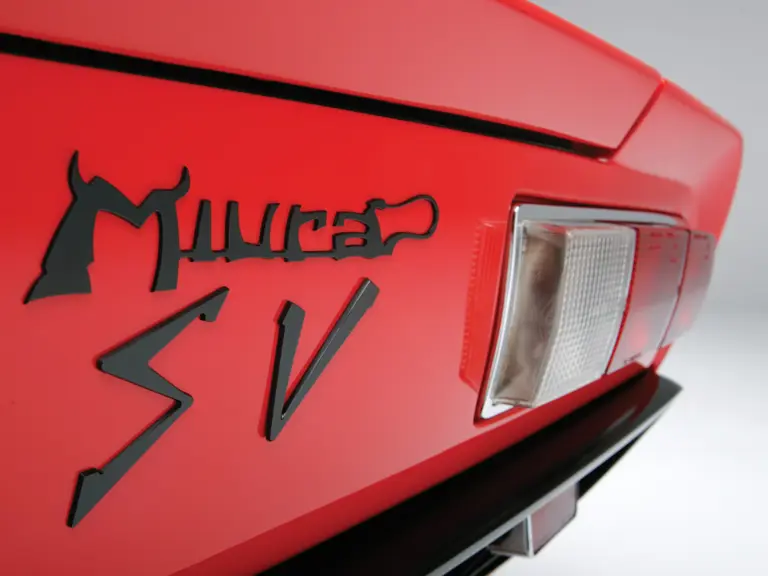
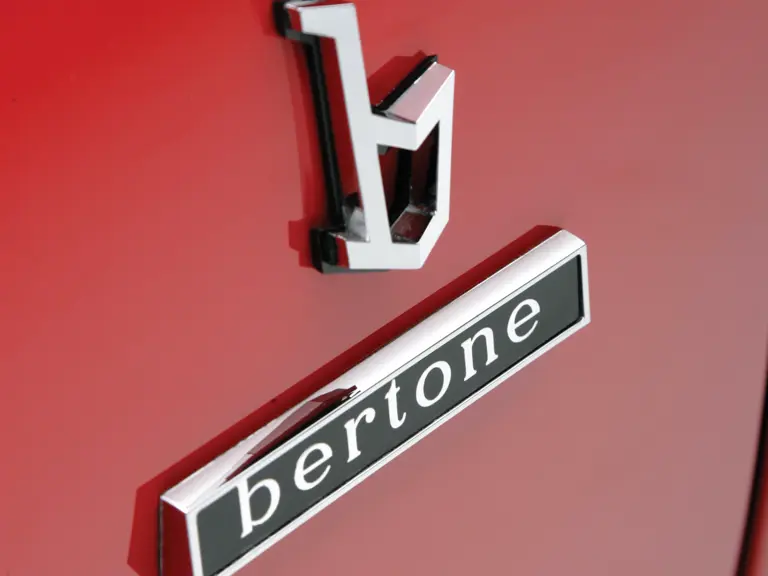
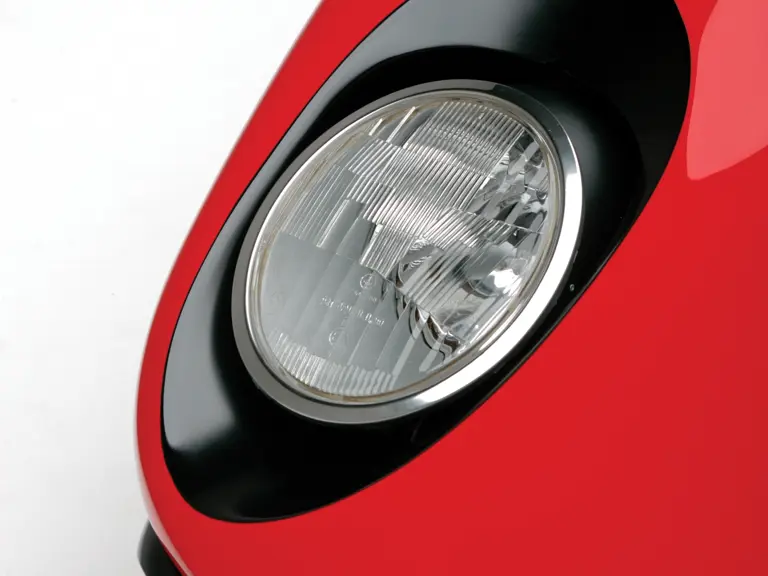

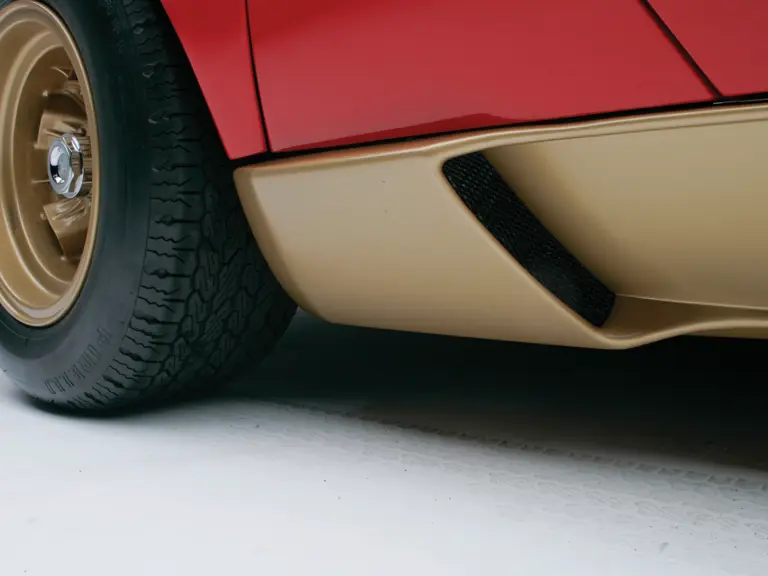
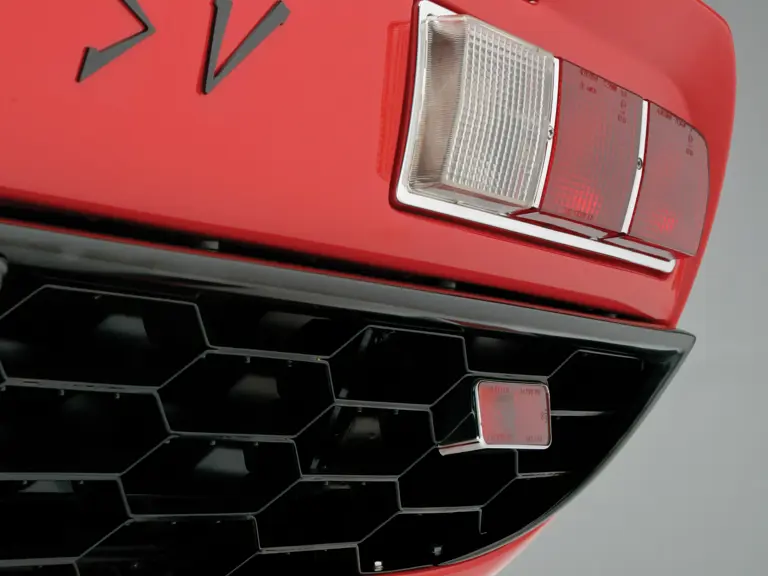
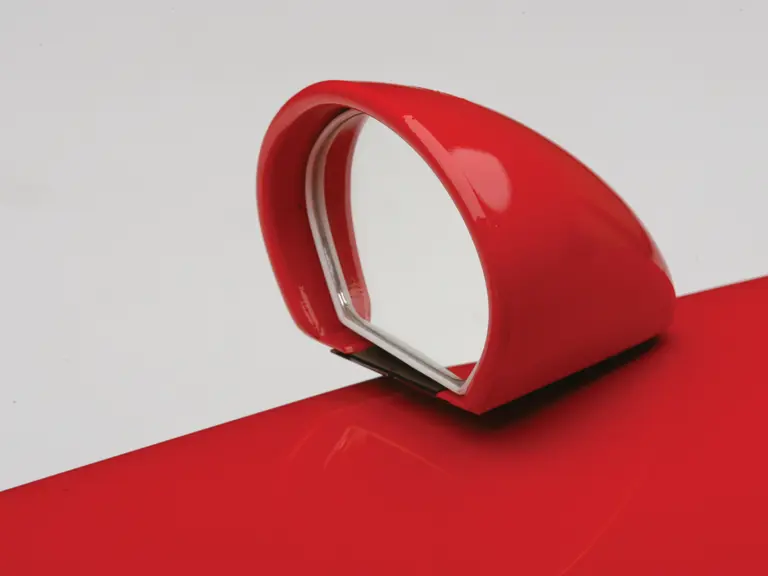
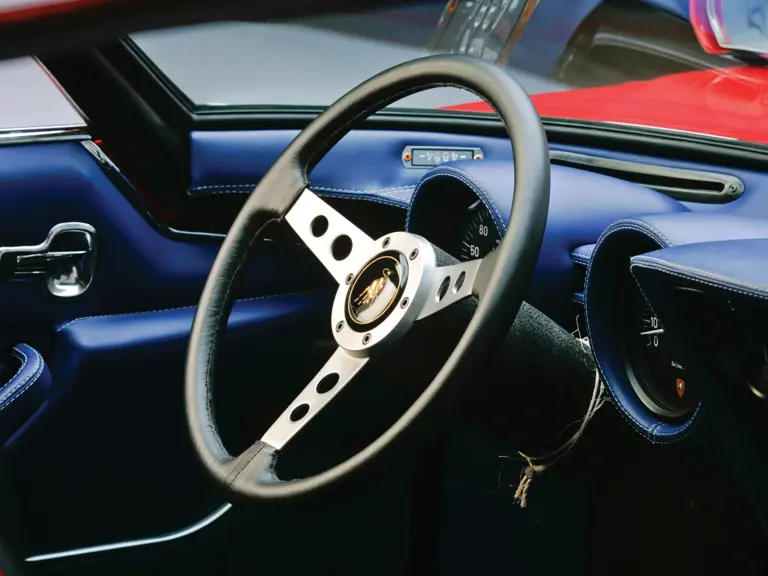
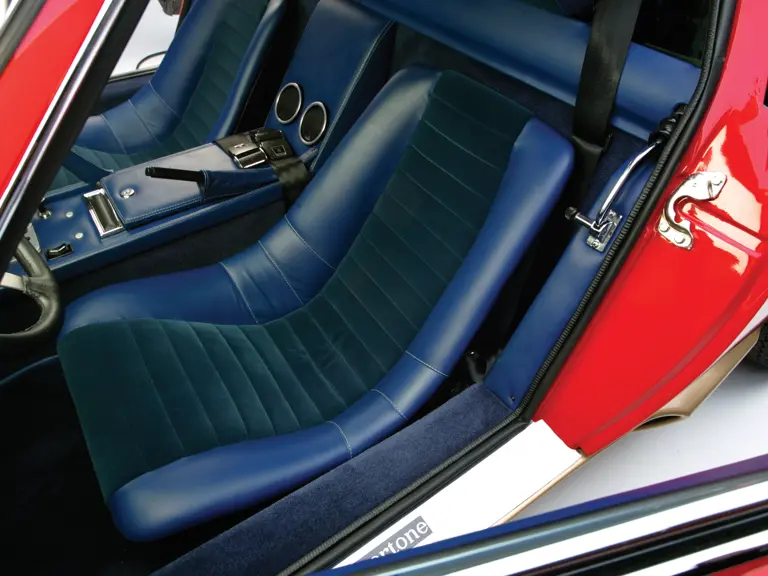
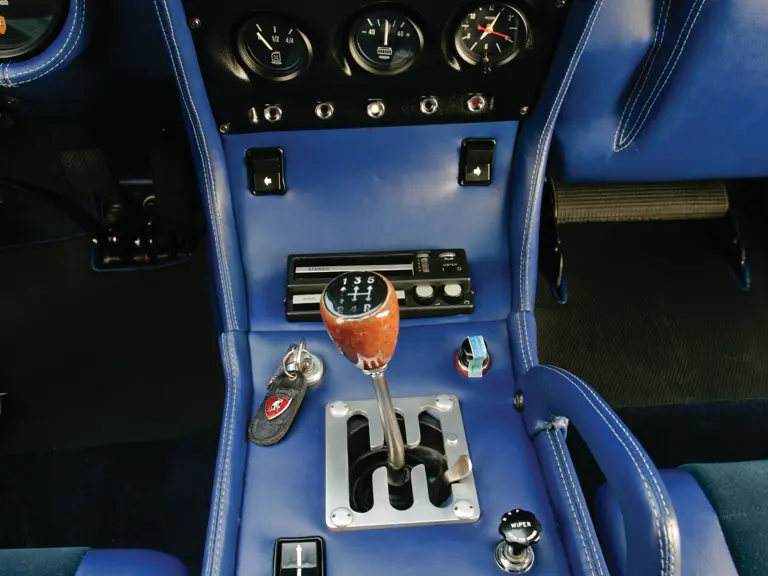
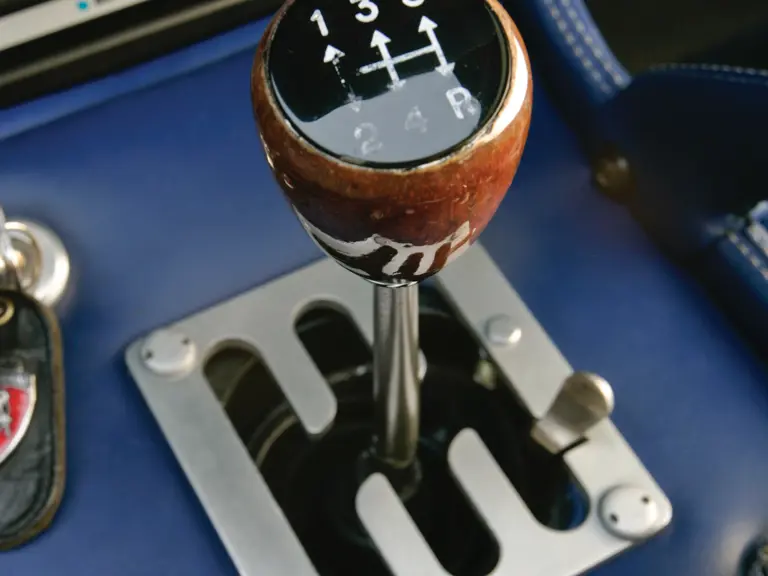
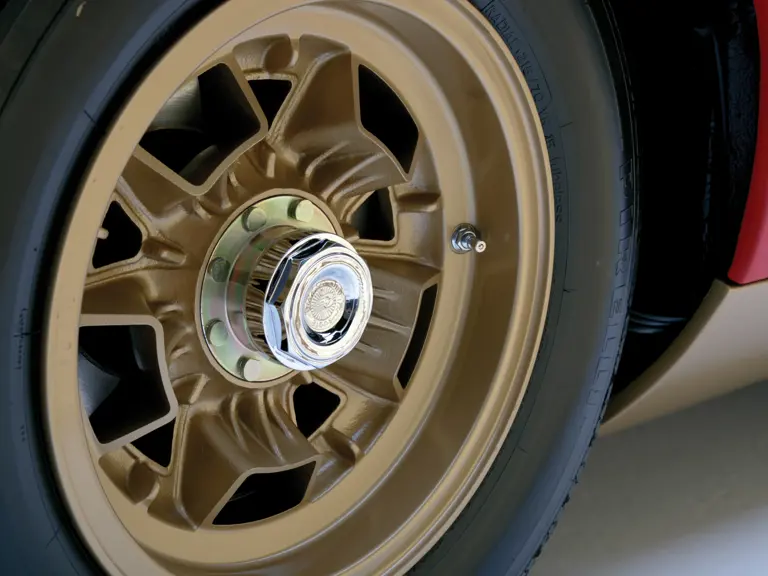

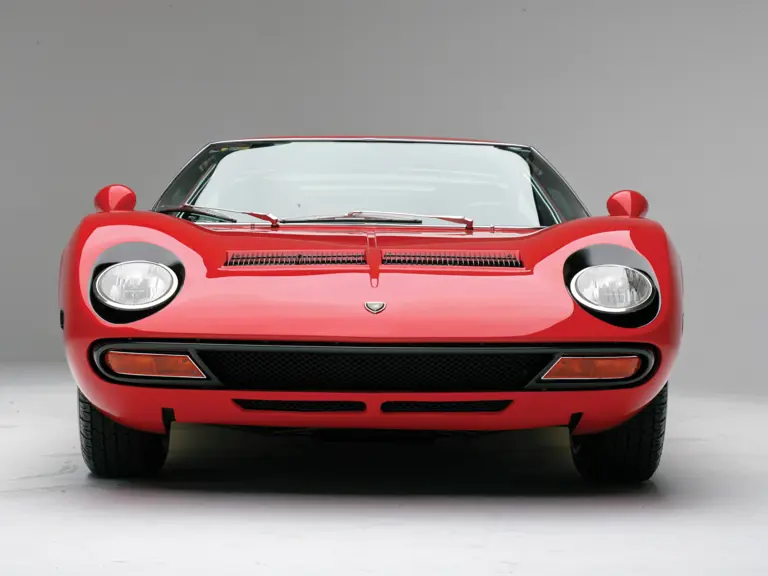
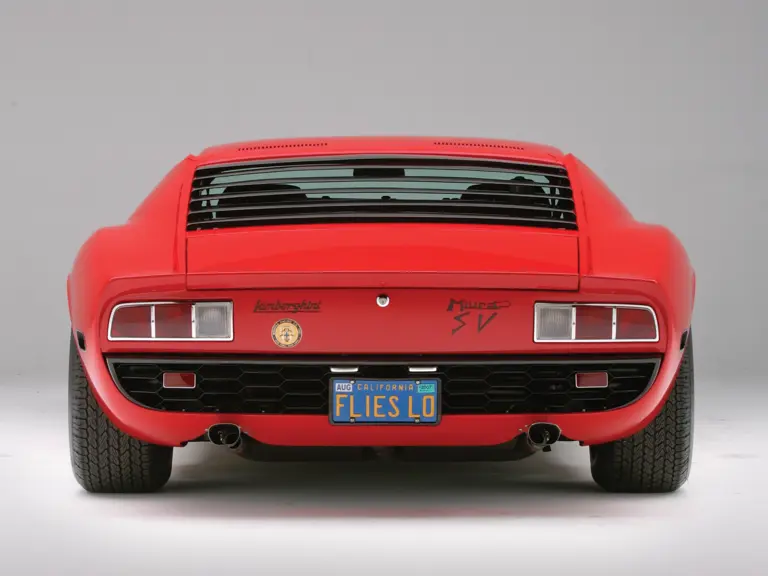
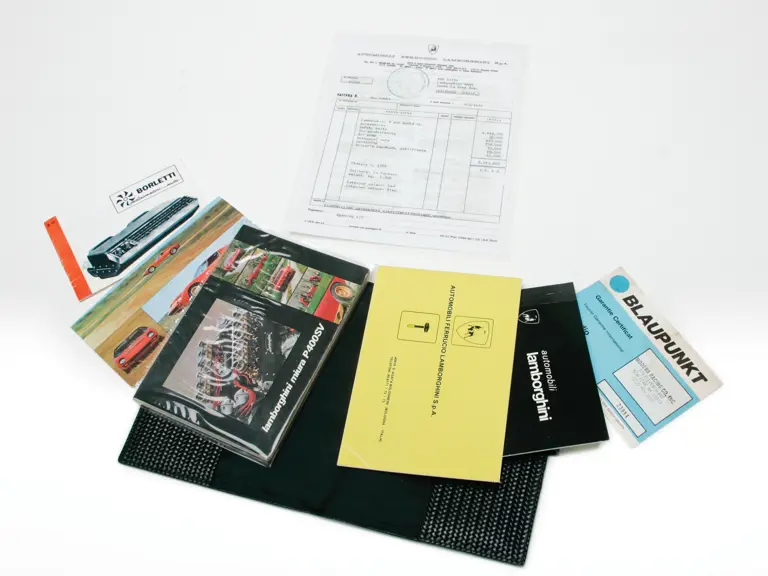
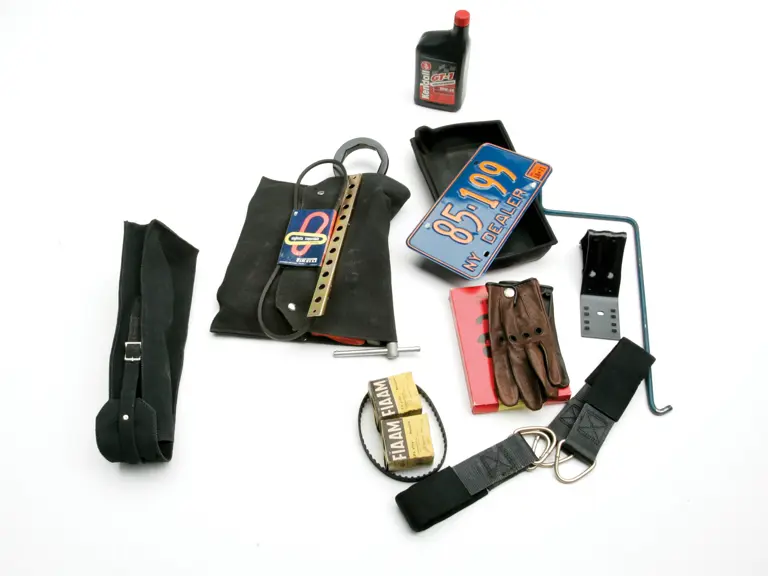
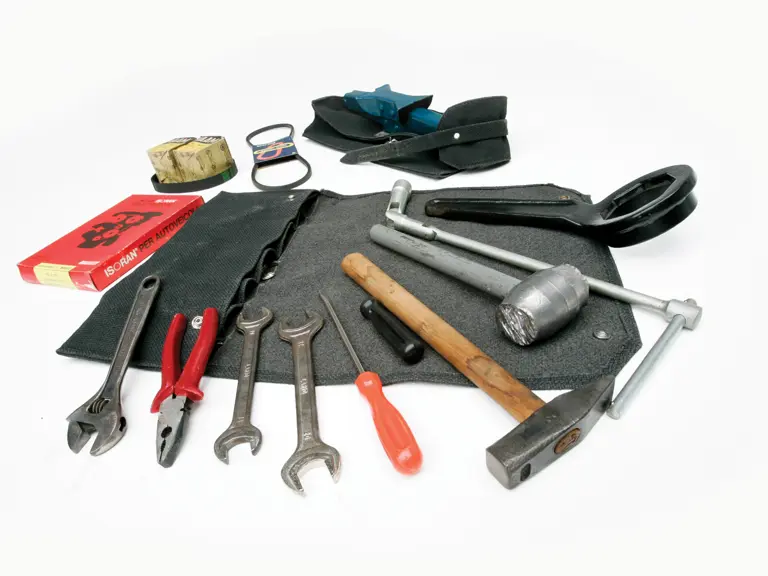
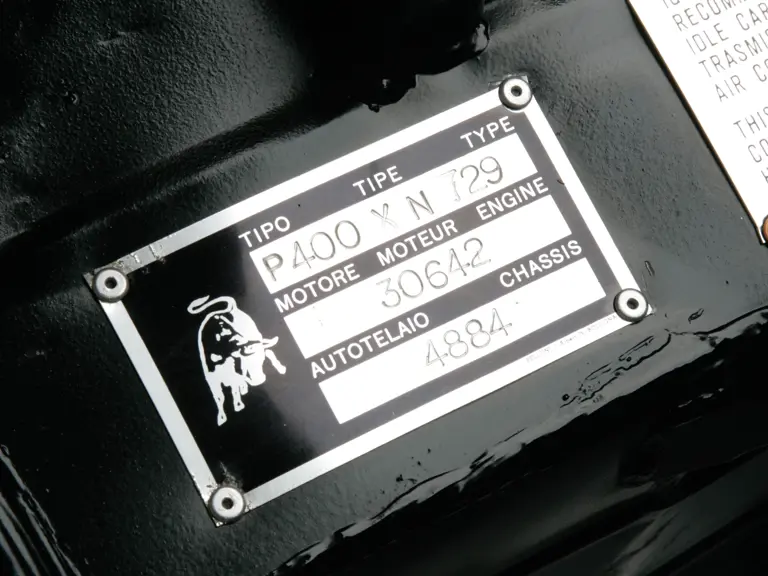

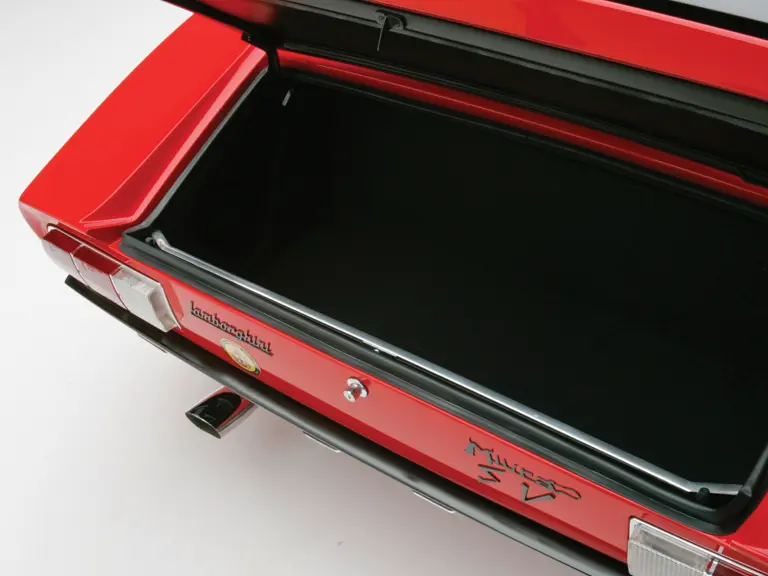
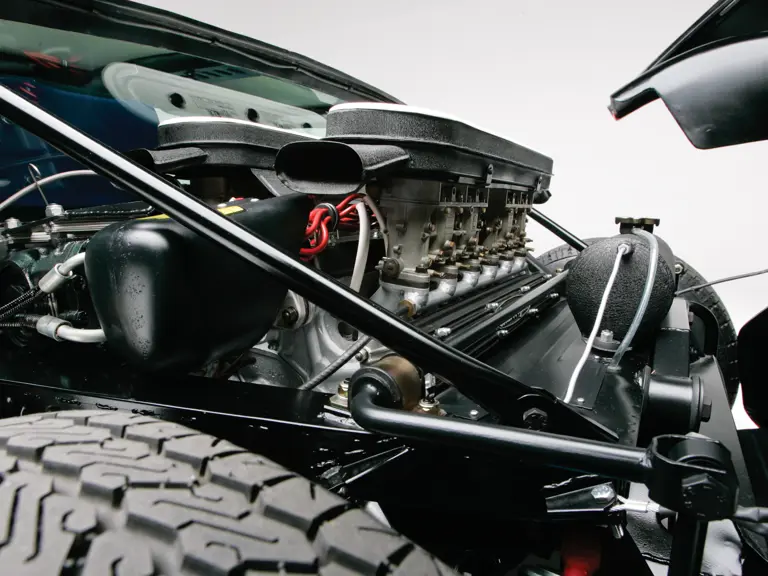
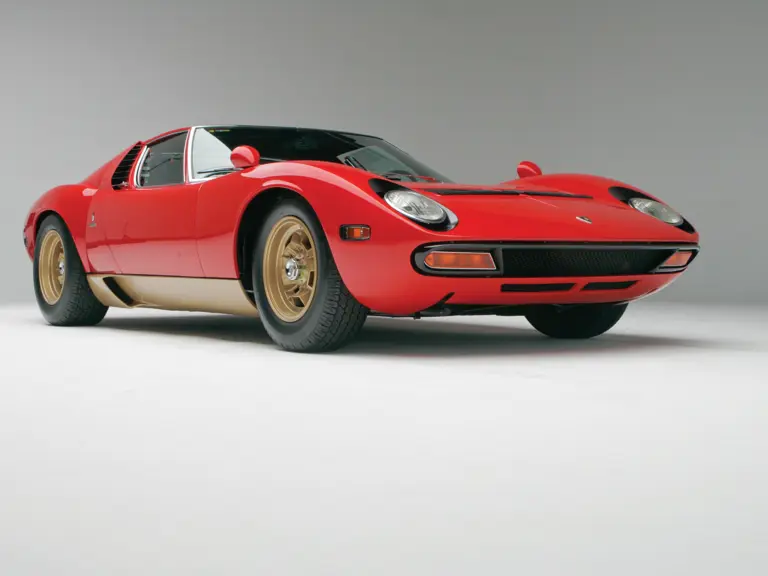

 | Amelia Island, Florida
| Amelia Island, Florida
